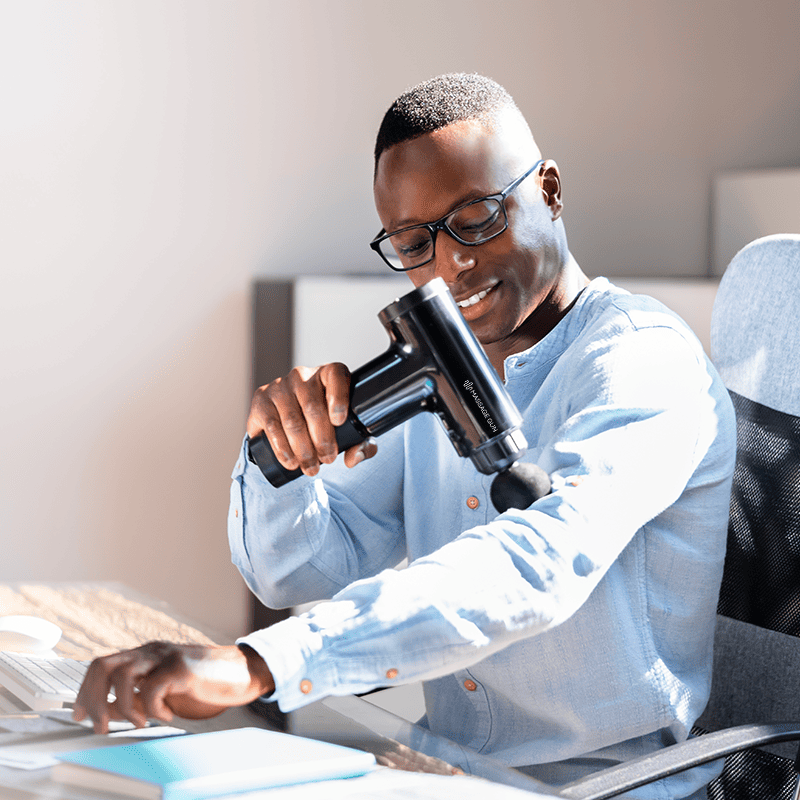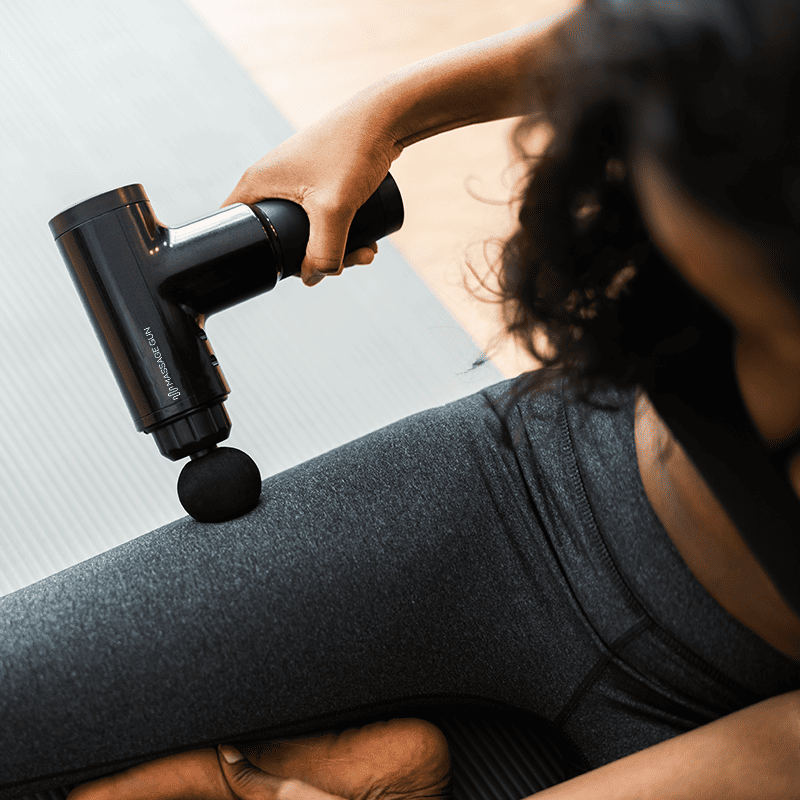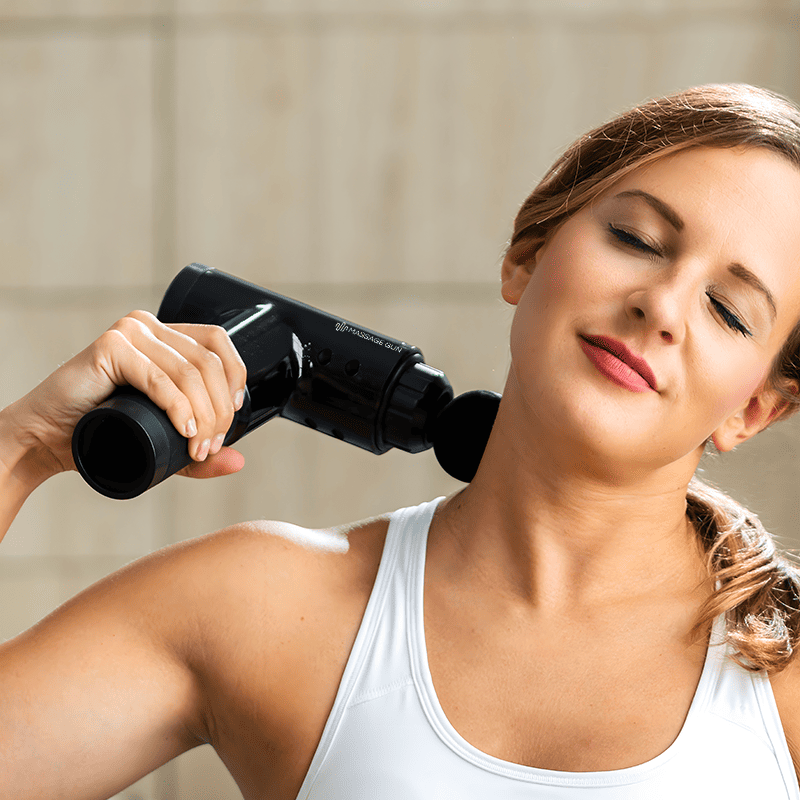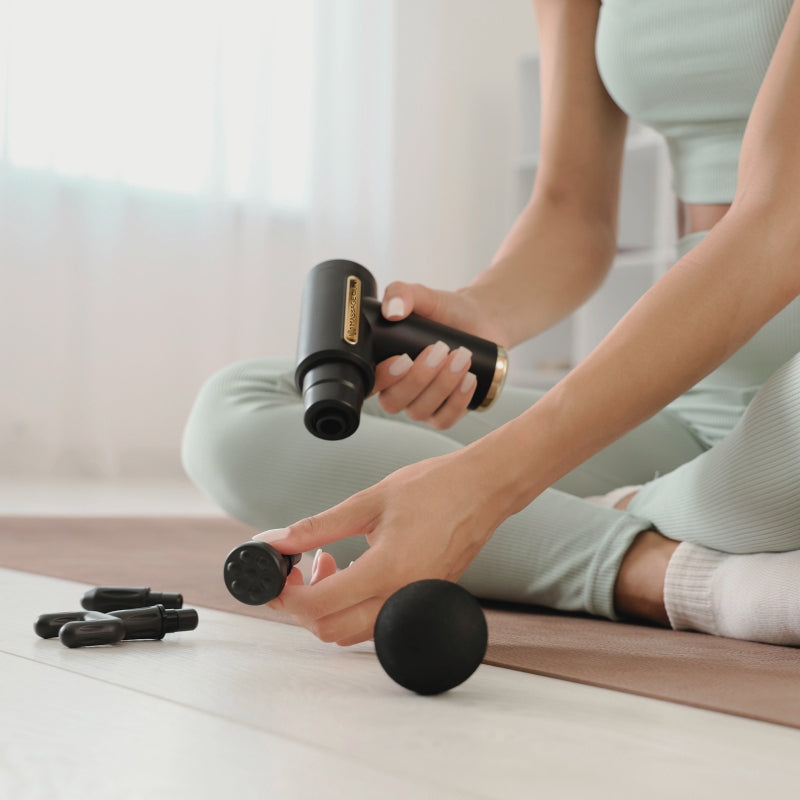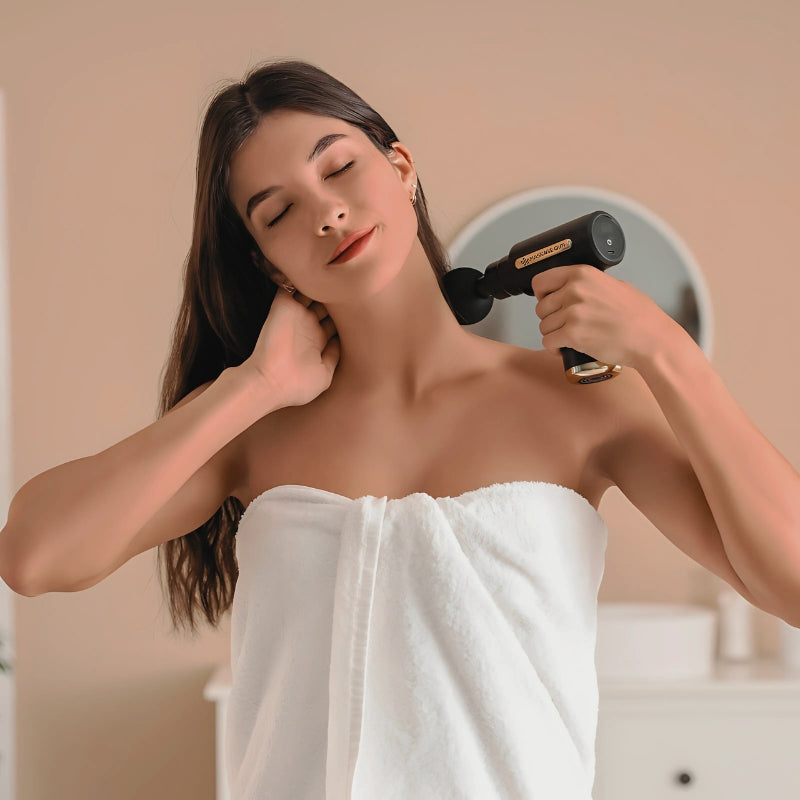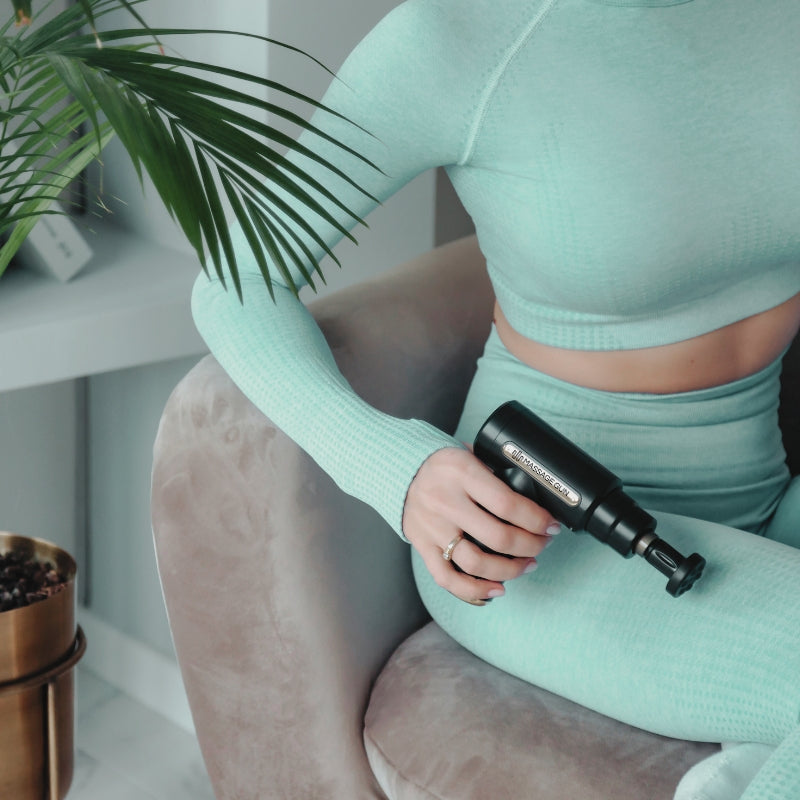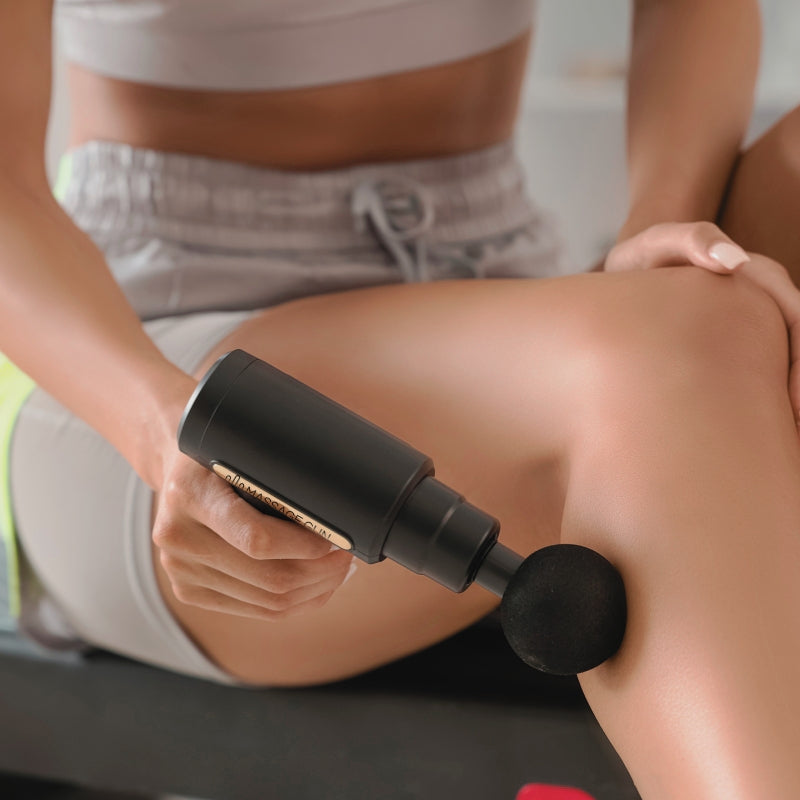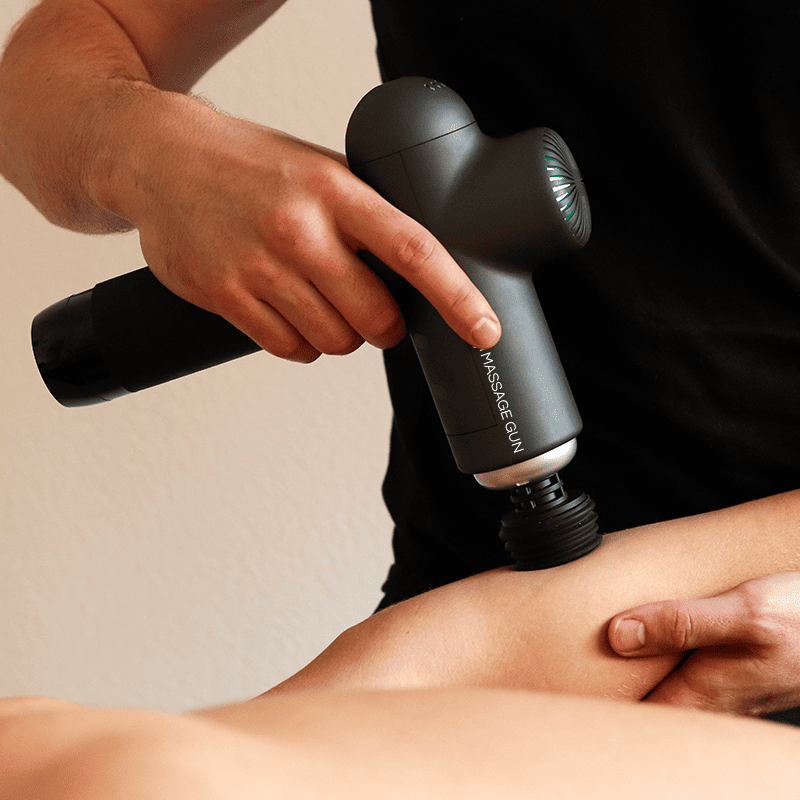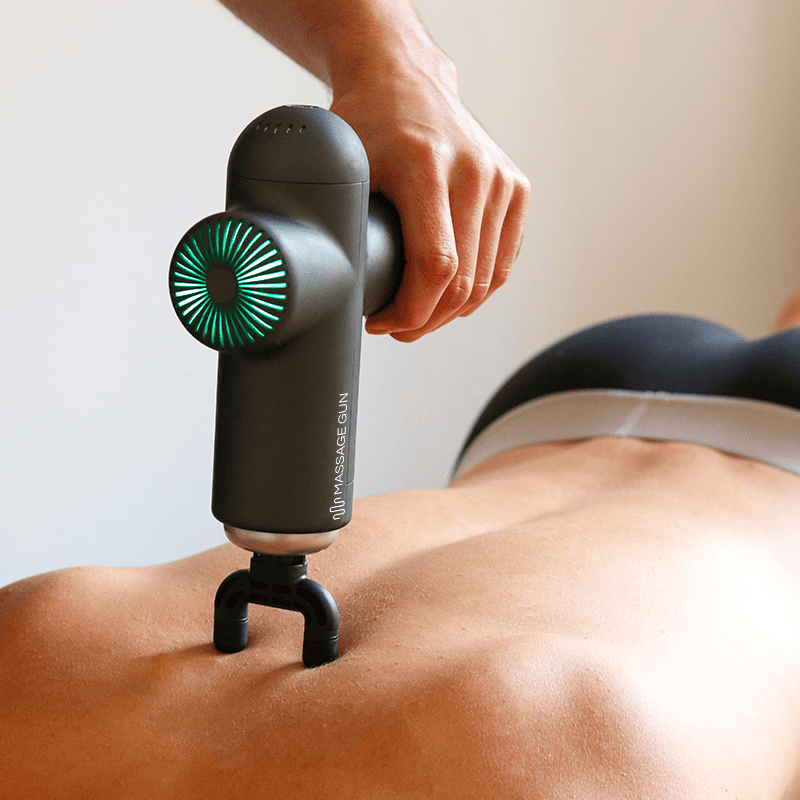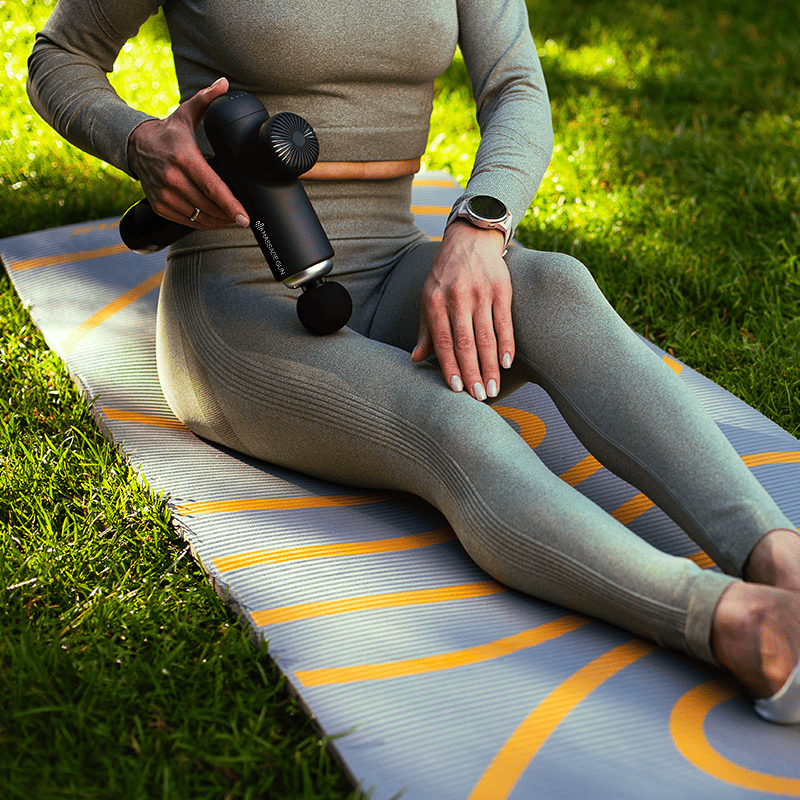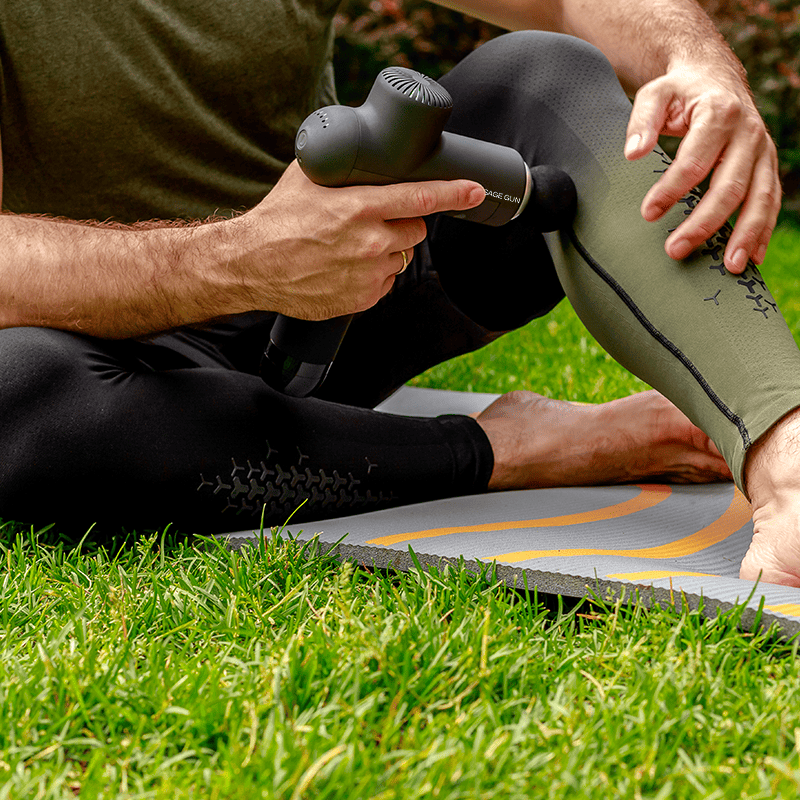Massage guns have become a popular tool for muscle recovery and pain relief, especially in the field of sports and physical therapy. However, as these devices gain popularity, questions about their safety have arisen, particularly whether using a massage gun can cause or dislodge blood clots.
While percussive therapy has many benefits, including improved blood flow and reduced muscle tension, certain individuals may face risks. This article will explore whether massage guns can lead to blood clot formation, the potential dangers, and how to use them safely.
Understanding how massage guns work

A massage gun, also known as a percussive massager, uses rapid vibration therapy to deliver pulses deep into the muscle tissue. This type of percussive therapy helps increase blood circulation, reduce muscle soreness, and promote recovery.
The vibrations improve the flow of blood through blood vessels, helping to flush out toxins and aid muscle recovery by relieving inflammation locale des tissus and reducing delayed onset muscle soreness (DOMS).
While these devices can be beneficial for relieving soreness and improving range of motion, improper use, especially near sensitive areas like the neck or major arteries, can cause serious health complications. The key question for many is whether using a massage gun can dislodge a blood clot or lead to other dangerous outcomes, including a stroke.
Can the use of a massage gun lead to blood clot formation?

In most healthy people, the use of a massage gun does not directly cause blood clots. In fact, the increased blood flow from percussive massage may reduce the risk of clot formation by keeping the blood circulating more effectively through the vessels. However, for individuals with pre-existing conditions such as deep vein thrombosis (DVT) or those who are on blood thinners, using a massage gun could be risky.
For patients with DVT, the vibration from a massage gun could potentially dislodge an existing clot, which could travel to the lungs, causing a pulmonary embolism, or to the brain, resulting in a stroke.
This is why people with a history of blood clots or those who have been diagnosed with DVT should avoid using a massage gun on the affected areas and consult a health care professional before using such devices.
Risks and contraindications for massage gun use

While massage guns are generally safe for the majority of users, there are some important contraindications to be aware of. Individuals with certain health conditions, particularly related to blood clots or blood vessels, should be cautious. Here are some key risk factors and situations in which you should avoid using a massage gun:
-
Deep vein thrombosis (DVT): People with DVT or a history of blood clotting should not use percussive therapy on affected areas, as it could lead to the formation of a blood clot or dislodge an existing one, potentially causing life-threatening conditions.
-
Varicose veins: Using a massage gun directly over varicose veins could worsen the condition by causing damage to blood vessels and increased bruising.
-
Blood thinners: Individuals on blood thinners should exercise caution when using a massage gun, as the pressure from the device could lead to excessive bruising or risk of bleeding.
-
Recent surgeries or injuries: Never use a massage gun near surgical sites or on recent injuries like fractures (fracture osseuse ou myosite), as it could delay healing and cause further damage.
-
Sensitive areas like the neck: Using a massage gun on your neck can be dangerous due to the proximity of major arteries, including the carotid and vertebral artery, where improper use could lead to a dissection or tear, increasing the risk of a stroke.
Can using a massage gun on your neck cause a stroke?

One of the biggest concerns with using a massage gun on the neck is the risk of causing a stroke. The neck contains important blood vessels, such as the carotid arteries and vertebral arteries, which supply blood to the brain.
If a massage gun is used improperly on the neck, particularly with too much pressure or in sensitive spots, it could lead to vertebral artery dissection a tear in the artery’s lining that can result in the formation of a blood clot. This clot can travel to the brain, causing a stroke.
To prevent this, never use a massage gun on the front or sides of the neck where these critical arteries are located. If you're experiencing neck pain, use the massage gun on the muscles at the back of the neck and safely set it to a low intensity.
Always consult a medical professional before using a massage gun near sensitive areas like the neck, especially if you have any pre-existing conditions or are on blood pressure medication.
The benefits and risks of using massage guns

Despite the risks, massage guns offer many benefits when used correctly. These devices are highly effective for promoting muscle recovery, easing muscle soreness, and improving range of motion. Some key benefits of using a massage gun include:
- Increased blood circulation: Percussion massage guns help stimulate blood vessels, improving blood flow to the muscles, which aids in recovery and reduces muscle strain.
- Lymphatic drainage: Percussion therapy can help reduce swelling by promoting the movement of lymph through the body, flushing out toxins.
- Reduced muscle tension: Regular use of a massage gun can ease muscle tightness, making it easier to recover from intense exercise and improve flexibility.
However, there are also risks associated with excessive or improper use:
-
Muscle or nerve damage: Applying too much pressure or using the device for too long can lead to nerve damage or muscle strain.
-
Dislodging blood clots: For individuals with undiagnosed DVT or other clotting conditions, using a massage gun could result in a clot moving to dangerous areas of the body, like the brain or lungs.
-
Overuse injuries: Using a massage gun for too long on the same area can cause tissue damage or excessive bruising. Limit sessions to 10-15 minutes per muscle group to prevent injury.
How to safely use a massage gun?

To maximize the benefits of a massage gun while minimizing the risks, follow these guidelines:
- Avoid sensitive areas: Do not use a massage gun near blood vessels, major arteries, or recent injuries like fractures.
- Consult a healthcare professional: If you have any medical conditions like DVT, varicose veins, or are on blood thinners, always seek medical advice before using a massage gun.
- Start slow: Begin with the lowest intensity setting and gradually increase the pressure as needed. Avoid using the device on the same area for more than 10-15 minutes.
- Monitor your body’s response: Pay attention to how your body reacts to percussive therapy. If you experience discomfort, bruising, or other symptoms, stop using the device and seek medical care.
Conclusion: can massage guns cause blood clots?

In conclusion, while massage guns are generally safe and effective for most users, individuals with pre-existing conditions like deep vein thrombosis or those on blood thinners should exercise caution. Using a massage gun improperly can increase the risk of dislodging a blood clot or causing damage to blood vessels. Always consult a medical professional
Frequently asked questions

1. Can a massage gun cause blood clots?
Using a massage gun does not typically cause blood clots in healthy individuals. In fact, the increased blood flow provided by percussive therapy can help improve circulation in soft tissue and prevent clot formation.
However, in rare cases, individuals with conditions like deep vein thrombosis (DVT) or injured vessels may be at risk if the massager is used improperly, leading to potential dislodging of a clot, which can travel to the lungs or heart, causing a severe condition like a pulmonary embolism.
Always recommend consulting a healthcare professional before using a massage gun if you have underlying health conditions that affect blood vessels.
2. Can a massage gun dislodge a blood clot?
In rare situations, using a massage gun near a pre-existing blood clot can dislodge it. This could lead to serious complications, including a pulmonary embolism or heart-related issues.
The rapid vibrations from the massager can disturb the soft tissue around a clot, causing it to break free and travel through the vessels. To avoid this risk, especially in areas with poor circulation or scar tissue, it’s best to consult a healthcare provider before using a neck massager or other massage devices near vulnerable areas.
3. Who should avoid using a massage gun?
Certain people should avoid using a massage gun, including those with severe circulatory issues, a history of rhabdomyolysis, or recent bone injuries.
Additionally, individuals with blood vessel conditions like varicose veins or deep vein thrombosis (DVT) should be cautious, as the treatment could exacerbate the condition by causing damage to soft tissue and potentially dislodging a blood clot.
Patients recovering from surgeries or with scar tissue should also refrain from using percussive therapy until cleared by their doctor.
4. Is it safe to use a massage gun if I’m on blood thinners?
Using a massage gun while on blood thinners requires caution. The device may increase the risk of bruising or soft tissue damage due to thinner blood, which leads to excessive bleeding under the skin. Additionally, the increased blood flow could disturb any undetected clots.
Although there is no direct evidence-based literature that links massage gun use to increased clotting, it’s important to consult your doctor to ensure that using the device won’t lead to complications.
5. Can using a massage gun on your neck cause a stroke?
Improper use of a massage gun on the neck can, in rare cases, lead to serious complications like a stroke. The neck contains major vessels, such as the carotid artery, which, if damaged, can cause blood clots to form or lead to artery dissection.
This can result in a severe stroke, particularly when too much pressure is applied to sensitive areas near the neck. Using a neck massager should be done with caution, and it’s best to avoid the front of the neck, focusing instead on soft tissue areas around the shoulders and back of the neck.
6. How can I use a massage gun safely to avoid blood clots?
To safely use a massage gun and reduce the risk of dislodging a blood clot, follow these guidelines:
- Avoid direct pressure over areas where you feel sore, have scar tissue, or suspect poor circulation.
- Limit the use of the massager to no more than 10-15 minutes per muscle group.
- Combine treatment with other forms of manual therapy like stretching or using a roller to improve performance and strength.
- Always consult a massage therapist or healthcare professional before using the device if you have a history of vascular issues or are recovering from an injury.
7. Can using a massage gun on my legs cause blood clots?
Using a massage gun on the legs does not typically lead to the formation of blood clots. In fact, the device can help increase blood flow to the muscles and soft tissue, promoting recovery.
However, in individuals with deep vein thrombosis (DVT) or those recovering from leg injuries, using the device could dislodge an existing clot. To stay safe, avoid using the device on areas that feel sore, injured, or where circulation is compromised.
8. What are the signs that a blood clot has been dislodged by a massage gun?
If a blood clot is dislodged after using a massage gun, you may experience sudden symptoms like severe chest pain, shortness of breath, dizziness, or swelling in the legs. These signs are indicative of a potential pulmonary embolism or other serious condition.
If you notice any of these symptoms, seek emergency care immediately, as the condition could lead to a life-threatening situation if left untreated. Healthcare professionals recommend stopping the use of the massager and seeking medical attention if these symptoms occur.
9. Can a massage gun help prevent blood clots?
In healthy individuals, a massage gun can help improve blood flow, potentially reducing the risk of clot formation. By increasing circulation to the soft tissue and flushing out toxins, it can aid in muscle recovery and prevent scar tissue buildup.
However, using the device should not be seen as a primary method for preventing clots. Regular exercise, stretching, and consulting a healthcare provider remain key to maintaining vascular health.
10. Can a massage gun cause nerve or blood vessel damage?
Yes, improper use of a massage gun can cause nerve damage or blood vessel damage if applied with excessive force or for too long in sensitive areas. This is especially true when using the device near bone, scar tissue, or major vessels.
Overuse of the device can cause rhabdomyolysis, a condition where damaged muscle tissue releases toxins into the bloodstream. To avoid these complications, limit the time you use the massager and consult a massage therapist or healthcare professional for advice on proper usage.




